Hoping to rebuild their downtowns, more NC cities are turning to baseball
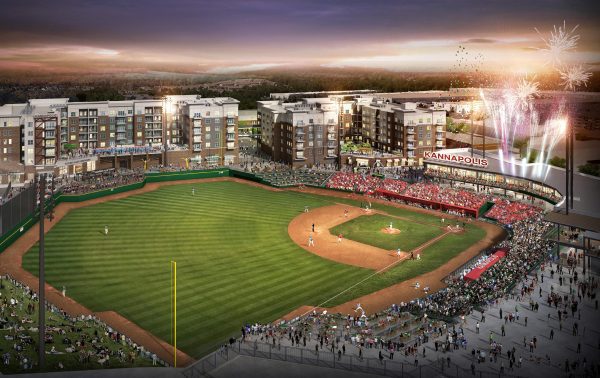
Smaller cities and towns across North Carolina are hoping an old, familiar sound will spark new life in their downtowns: The crack of a bat.
Under the blazing sun in Kannapolis last week, workers installed the highest steel beam of the city’s new ballpark. The stadium, a block from Main Street with a capacity of just under 5,000, is expected to open in time for the minor-league Kannapolis Intimidators to move in for the 2020 season.
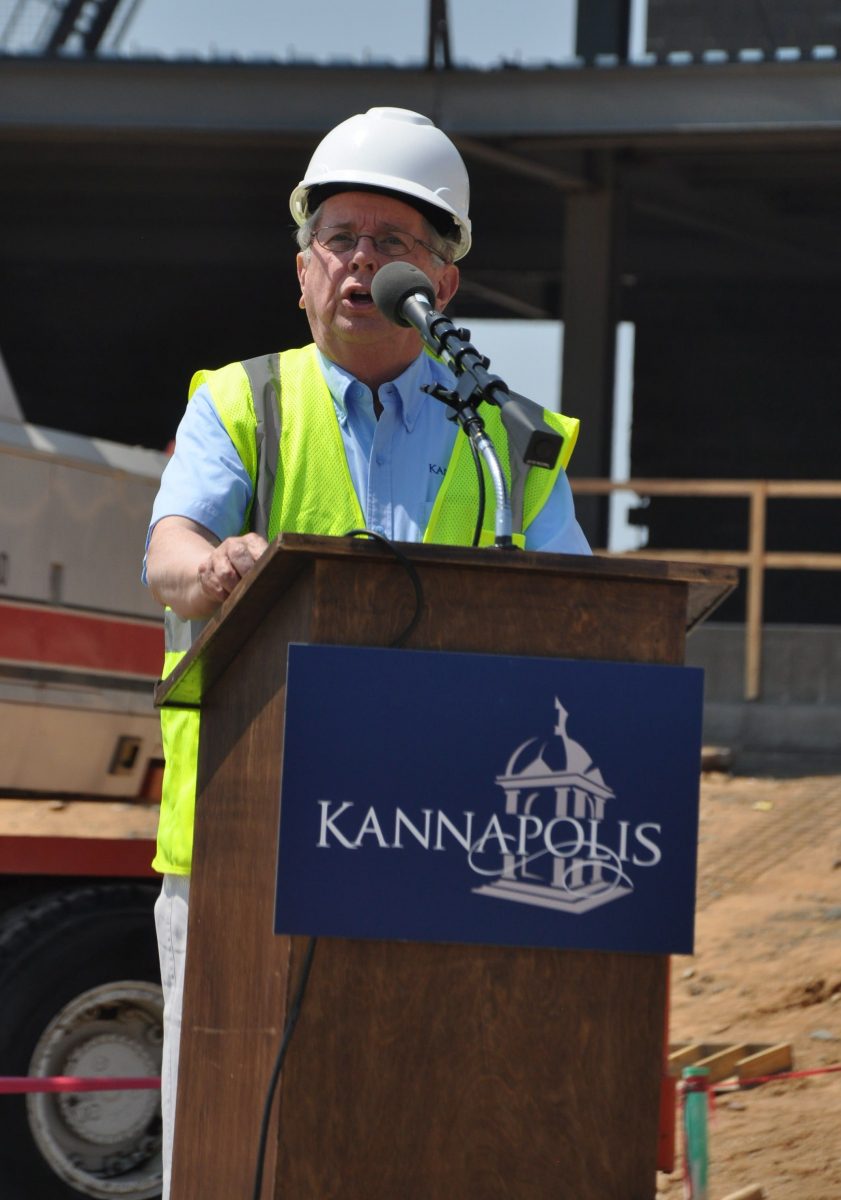
Kannapolis Mayor Darrell Hinnant speaks at the “topping out” ceremony at the new, downtown ballpark. Photo: Ely Portillo.
Mayor Darrell Hinnant said the ballpark represents a dream many residents have told him they didn’t think they’d live to see.
“This is a big-time event for Kannapolis,” said Hinnant. “It’s not going to be a lifetime before this project is done.”
Kannapolis is counting on apartments, restaurants, shops and vitality to follow the new stadium. It’s a formula that appears to have borne fruit with other minor league teams in the state. In Charlotte, the Knights drew the highest attendance in minor league baseball last year, and apartments, offices and hotels have sprung up around BB&T Ballpark and Romare Bearden Park. In Durham, the Durham Bulls play amidst renovated warehouses in a former tobacco district that’s no longer an empty husk.
“If you’re going to revitalize a downtown, you need an anchor,” said Hinnant.
But such projects also represent a huge financial investment – and risk – for the towns that take them on. Kannapolis is paying for its new $52 million stadium with city-issued bonds. And the city is spending an additional $13.4 million on an adjacent parking deck to serve a mixed-use apartment and retail project next to the stadium, another major component of the downtown revitalization plan.
In Gastonia, leaders are developing a new minor league ballpark downtown, on Franklin Street. Called FUSE, plans call for the city to finance $18.5 million with bonds, while spending another $1 million of public money and raising $2.5 million from private and charitable sources. High Point’s recently opened ballpark cost $36.1 million, while a new ballpark built in Fayetteville totaled $38 million.
Kannapolis leaders said they’re confident the investment will pay off.
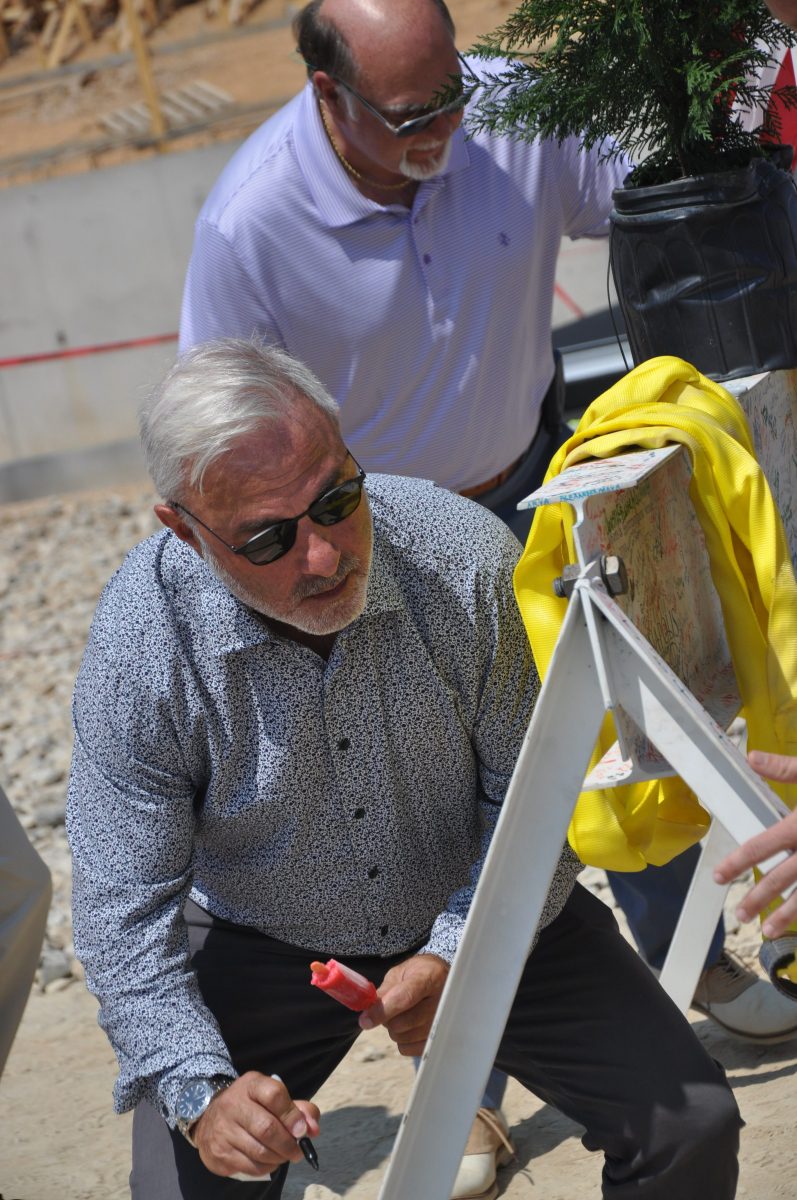
Kannapolis Intimidators owner Andy Sandler signs a steel beam for the new stadium. Photo: Ely Portillo.
“The momentum of this facility has already garnered commitments of $128 million in investments in our downtown including apartments, a brewery, restaurants, office space and potentially a hotel,” said city manager Mike Legg, in a statement. “We have spoken to hundreds of business owners and developers and we have heard repeatedly without the (ballpark) this investment would not be happening.”
The Intimidators have signed a 30-year lease for the ballpark, under which they’ll pay $450,000 for the first three years. The rent goes up $35,000 every three years.
The new stadium represents a big change for the team. Bounded by Lake Fisher, woods and Interstate 85, the Intimidators’ current ballpark is isolated from the city, and accessible only by car. Last year, attendance at Intimidators games was the lowest in the South Atlantic League, averaging 1,115 a game for total attendance of 64,688.
Hinnant said baseball experts have told him attendance will jump by at least 50 percent. The team plans to unveil a rebranding and new name after the 2019 season, which is also expected to generate more interest among fans.
“Minor league experts have told us we should expect a huge increase in attendance,” Hinnant said.
From mills to mixed-use
Located about 25 miles northeast of Charlotte, Kannapolis has a unique history. The city was effectively built by Cannon Mills, which developed and owned most of downtown for decades. Billionaire David Murdock bought the mills in 1984, along with the real estate.
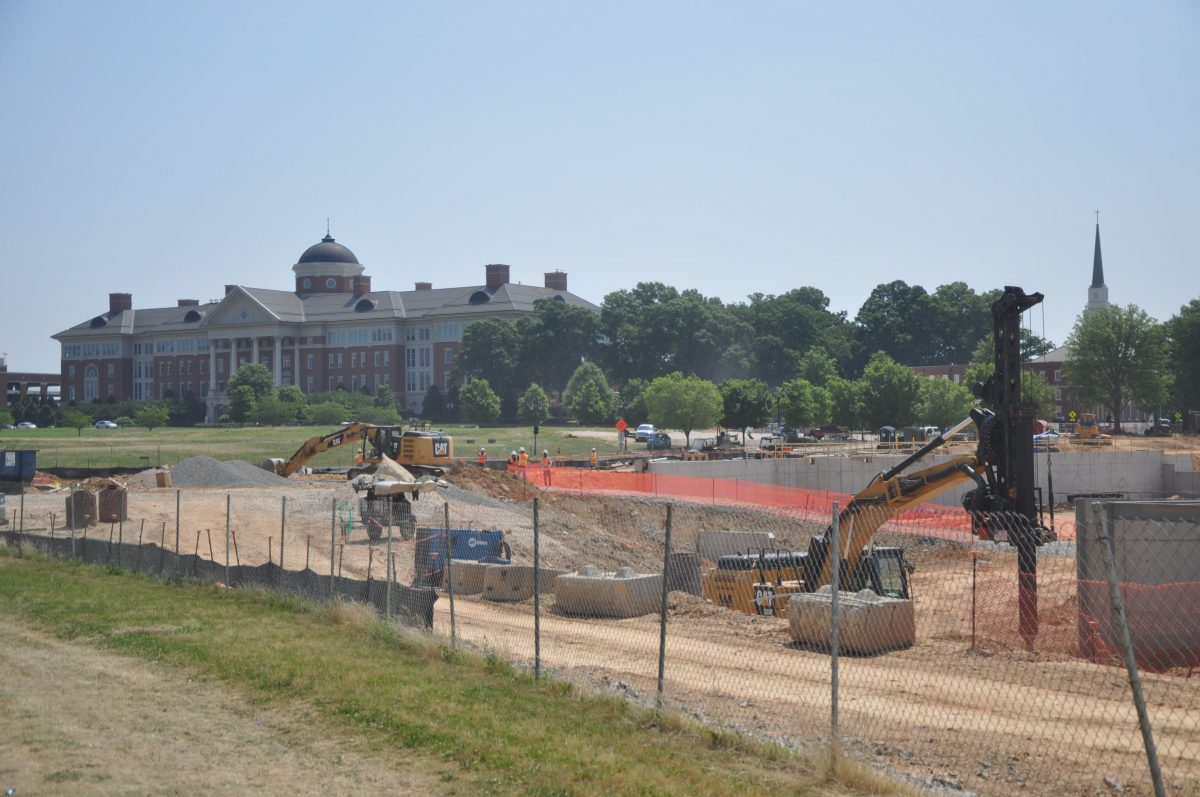
Part of the North Carolina Research Campus, behind the new ballpark site. Photo: Ely Portillo.
After the mills were sold several times, Kannapolis suffered one of heaviest blows from the textile industry’s decline: In 2003, owner Pillowtex filed for bankruptcy and laid off 4,340 workers in one day. Millions of square feet of industrial space were left empty in the town’s heart, as the idled factories awaited demolition.
Since then, Kannapolis has been trying to find its footing. Murdock opened the North Carolina Research Campus to conduct studies on food, health and nutrition on the site of the former mill, but much of the land around the campus remains empty grass lawns, space once occupied by thousands of workers and their machines. About 1,000 people work at the research center, according to news reports – far fewer than the 5,000 predicted more than a decade ago when its doors opened.
Town officials decided to build take revitalization efforts into their own hands. In 2015, Kannapolis spent $8.75 million to buy about 50 acres of its downtown land, most of it from Murdock.
Since then, the city has focused on attracting the markers of a healthy downtown: Restaurants, apartments and shops. Developer LMG is spending $61 million on VIDA, a 286-unit apartment complex with 54,000 square feet of new and renovated retail, along with a 125-room hotel with a lobby in the former Cabarrus Bank Building.
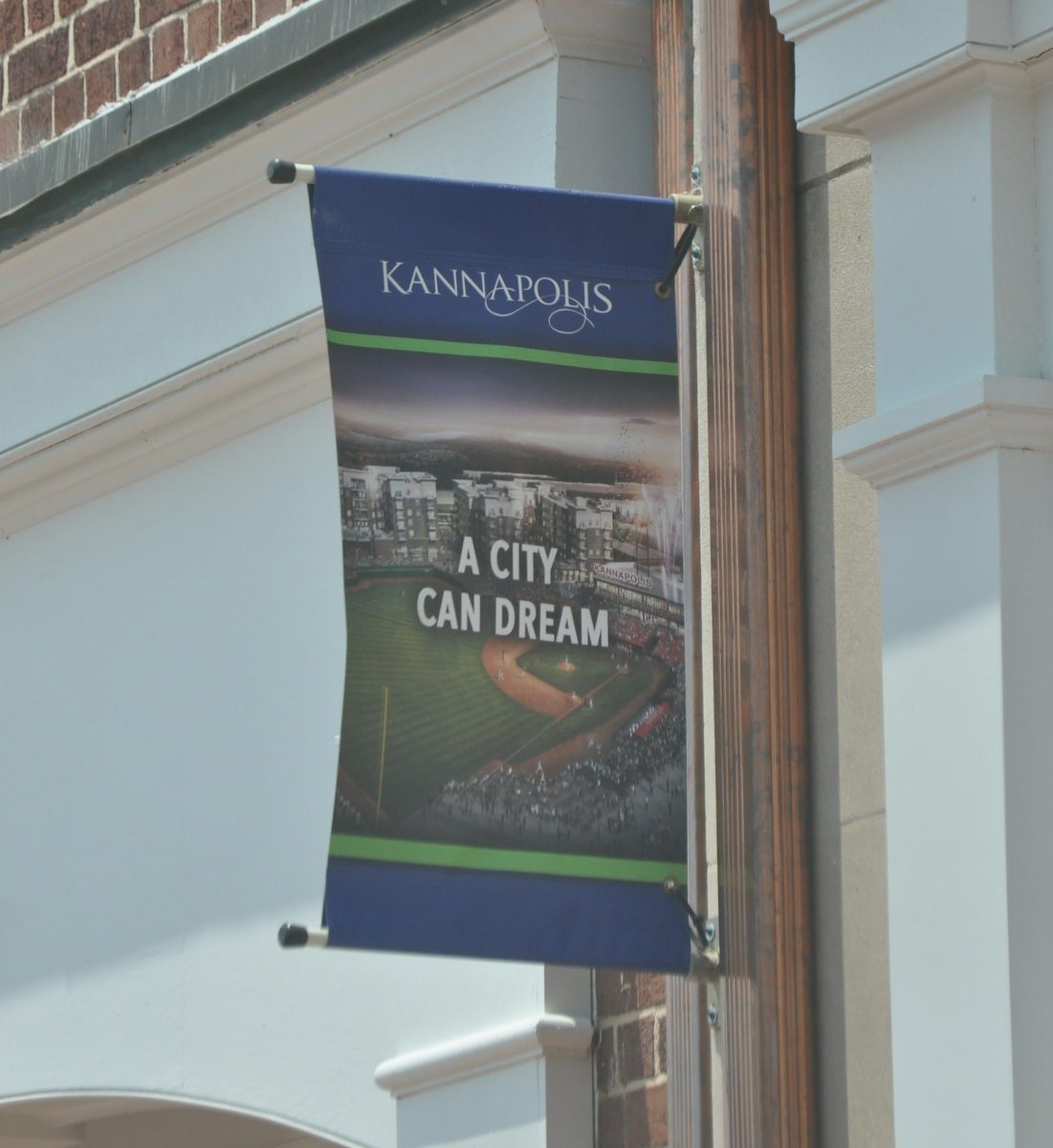
Kannapolis is promoting its new downtown vision. Photo: Ely Portillo.
Kannapolis’ first brewery, Armory Beer Company, is slated to open this fall in the former Rotary building next to the VIDA project. And the city is seeking a developer to build at least 108 townhouses on part of the former Cannon Mills Plan 4 site, adding new, dense, for-sale housing to downtown.
The area has also been designated a federal opportunity zone, meaning investors can reap tax breaks for putting money into the redevelopment plans.
In recent years, Kannapolis’ population. It totaled just under 50,000 people in 2018, according to Census estimates. That’s up almost 17 percent from 2010.
The growth rate is similar to Charlotte’s, and ahead of some of the region’s other cities and towns. Over the same time period, Charlotte’s population grew about 19 percent, as did Concord’s, while Mooresville’s population grew 17 percent, Monroe’s population grew 8 percent and Gastonia’s population grew by about 7 percent.
But while the city is focused on revitalizing its downtown, much of Kannapolis’ growth is being powered by new subdivisions five or six miles away. With names like Afton Ridge and Kellswater Bridge, hundreds of new houses are popping out of the red dirt along major roadways, and “Land for Sale” signs promise more to come.
Hinnant said that such growth will help Kannapolis attract more needed retailers, like a grocery store on the south side of the city. He recounted talks he’s had with Publix executives.
“They said we have the right demographics,” he said, “We just need more rooftops.”
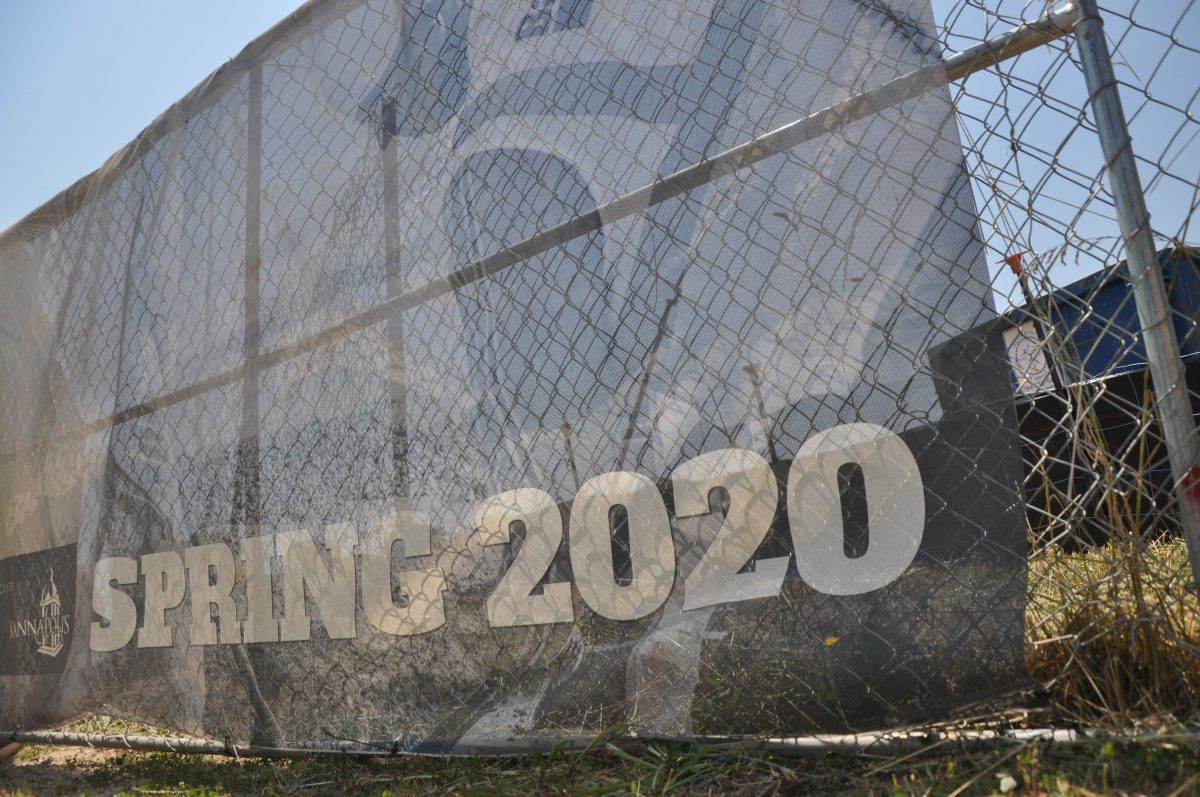
Kannapolis is planning to open its new ballpark in time for next season. Photo: Ely Portillo
Regardless of which part of Kannapolis new residents move to, Hinnant said the goal is to give them an alternative to driving into Charlotte to spend their free time and money – as well as find work. His ultimate hope is that revitalizing downtown will draw back jobs.
“We’re going to make this the center of their attention,” Hinnant said of the new downtown he envisions. “They still may drive back-and-forth to Charlotte to work, but there’s going to be lots more jobs here.”